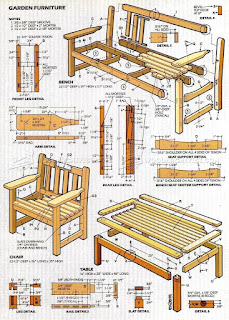Personalized Wood Signs: Elevating Spaces with Crafted Elegance
In the realm of personalized home décor, corporate branding, and event commemoration, the enduring appeal of handcrafted wooden signs remains unparalleled. Their rustic charm, coupled with the ability to convey unique messages, makes them a versatile and highly sought-after option. This comprehensive guide explores the multifaceted world of personalized wood signs, delving into their design, customization options, and the enduring impact they have on various settings.
The Allure of Personalized Wooden Signs
Beyond mere signage, personalized wood signs represent a tangible expression of individuality and style. Their inherent warmth and tactile quality contribute to a sense of welcoming authenticity that digitally printed alternatives often lack. This inherent appeal translates across diverse applications, enriching both residential and commercial spaces. The careful selection of wood type, the artistry of the craftsmanship, and the personalization itself combine to create a unique piece that transcends mere functionality, becoming a cherished element of the environment.
The Versatility of Application
The versatility of personalized wooden signs is a key factor in their enduring popularity. Their applications are practically limitless, extending from:
- Residential Settings: From welcoming guests with personalized family names at the entrance to adorning bedrooms with motivational quotes or whimsical sayings, wooden signs add character and personality to any home.
- Commercial Spaces: Businesses leverage wooden signs for branding purposes, creating a unique atmosphere that resonates with their target audience. From rustic café signs to sophisticated corporate logos on reception desks, they project a specific image and enhance brand identity.
- Event Celebrations: Weddings, birthdays, anniversaries – personalized wood signs serve as memorable keepsakes and stunning décor elements. They can display event dates, names, or inspiring messages, capturing the spirit of the occasion.
- Educational Institutions: Schools and universities can utilize personalized wooden signs for wayfinding, inspirational quotes in classrooms, or to acknowledge achievements and milestones.
Design and Customization Options
The process of creating a personalized wooden sign involves a careful consideration of several key design elements that collectively contribute to its overall aesthetic and impact. This process allows for a high degree of customization, ensuring that the final product perfectly reflects the client's vision and intended purpose.
Choosing the Right Wood
The selection of wood plays a crucial role in determining the final look and feel of the sign. Different wood types offer unique characteristics:
- Reclaimed Wood: Provides a rustic, environmentally conscious aesthetic, displaying unique textures and markings that reflect its history.
- Pine: A classic, affordable option offering a light, warm tone, suitable for a variety of design styles.
- Oak: A robust and durable choice, providing a rich, deep color and exceptional longevity.
- Walnut: Offers a sophisticated and elegant appearance with its dark, lustrous grain.
The choice of wood will depend on factors such as the desired aesthetic, budget, and intended environment of the sign.
Personalization Techniques
The personalization of a wooden sign can be achieved through various techniques, each offering a distinct visual appeal:
- Hand-painted lettering: Provides a unique, handcrafted touch, with variations in stroke and texture adding character.
- Laser engraving: Offers precise, clean lines and intricate designs, ideal for detailed logos or complex lettering.
- Sandblasting: Creates a subtle, etched effect, ideal for a minimalist or understated design.
- Vinyl lettering: Offers a cost-effective and versatile option, allowing for a wide range of colors and fonts.
The chosen technique will influence the overall look and durability of the personalization.
Size, Shape, and Finishing Touches
The dimensions and shape of the sign are critical design considerations. A larger sign commands more attention, while a smaller sign can provide a more subtle, intimate touch. Shapes can range from traditional rectangles and squares to more unconventional designs. Finishing touches, such as distressing, staining, or the addition of decorative elements, further enhance the sign's aesthetic appeal and overall character.
The Enduring Impact: More Than Just a Sign
Personalized wooden signs transcend their functional purpose, becoming cherished possessions that hold sentimental value and contribute significantly to the atmosphere of a space. Their handmade quality fosters a sense of connection and authenticity, differentiating them from mass-produced alternatives. They become conversation starters, visual reminders of special occasions, and testaments to personal style and preferences. The investment in a personalized wooden sign is an investment in lasting quality, enduring aesthetic appeal, and the creation of a truly unique piece that will be treasured for years to come.
Beyond Functionality: A Symbol of Lasting Memories
For events, a personalized wooden sign becomes more than just directional signage; it becomes a tangible keepsake, a lasting memory of a special celebration. For businesses, a well-designed sign becomes a powerful branding tool, consistently reinforcing the company's identity and values. For homes, these signs contribute to the overall narrative of the dwelling, reflecting the personality and style of its occupants. This enduring impact solidifies the value of choosing a personalized wooden sign over less lasting alternatives.
The Craftsmanship and Care
The care and craftsmanship involved in creating a personalized wooden sign are evident in the finished product. Each sign is a testament to the skill and dedication of the artisan, reflecting a commitment to quality and attention to detail. This handcrafted nature contributes to the unique character of each piece, ensuring that no two signs are exactly alike, further enhancing their value and appeal.
In conclusion, personalized wooden signs offer a unique blend of artistry, functionality, and lasting appeal. Their versatility, customization options, and enduring impact make them an ideal choice for enhancing homes, businesses, and event celebrations alike. The investment in a handcrafted wooden sign is an investment in quality, lasting memories, and the creation of a truly unique and cherished piece.





















